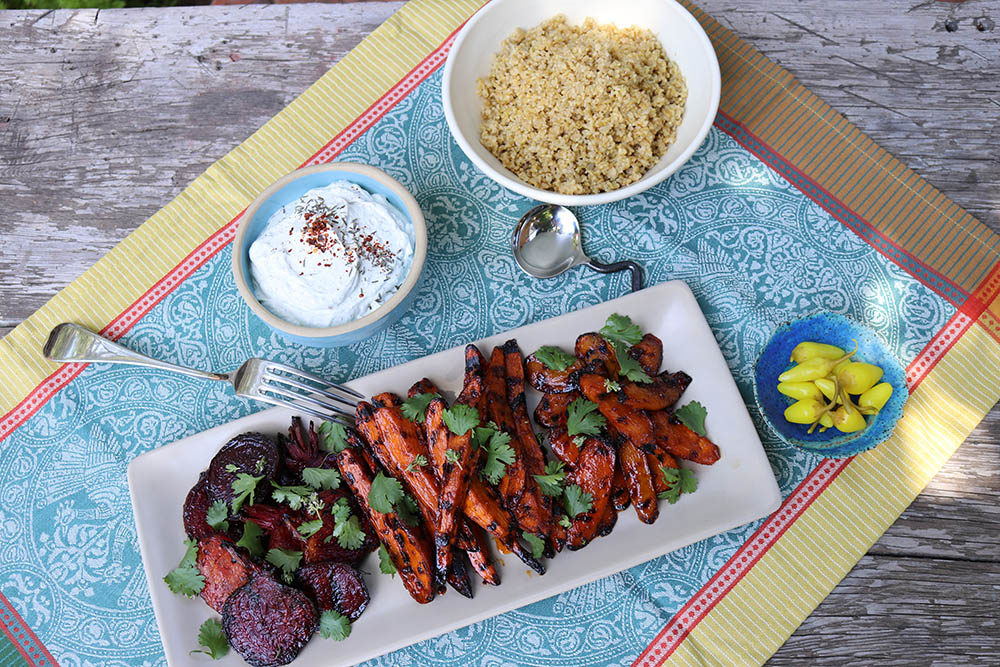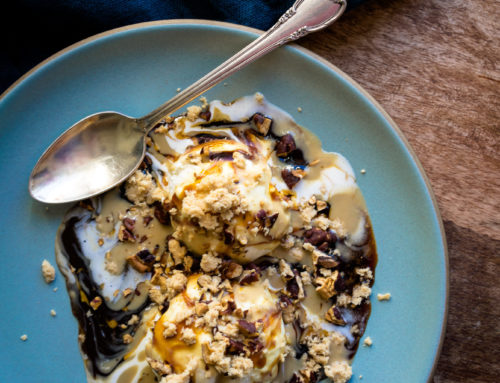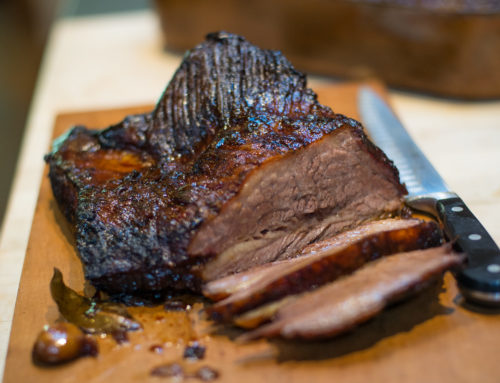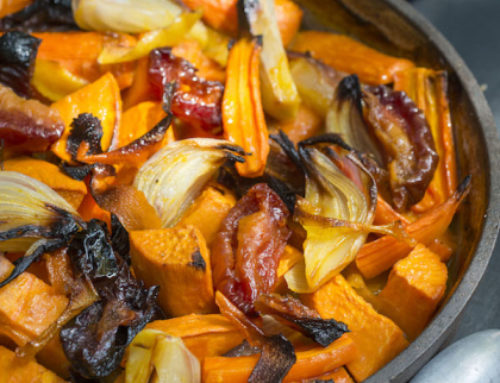I fell in love with silan–aka date honey, date syrup, date molasses–when I discovered that the Iraqi side of my family made a wondrous silan-and-pecan charoset (page 171 in The Seasonal Jewish Kitchen), not an apple-based one. For years, I happily purchased the best-quality readymade silan I could find and spooned it over ice cream, yogurt, and morning toast, or combined it with harissa to lacquer a roast chicken, and of course, used it to make charoset during Passover.
Happily, that is, until I learned that my grandmother, who died years ago, used to make her own silan. Using the snippets of memories gleaned from family members about how my Safta Rachel produced the syrup, I’ve unlocked the secrets of her silan. You can read more in my Jewish Journal article about silan’s fascinating backstory and my journey of discovery.
Making silan is a magical and ancient process that yields a silky smooth “honey” with hints of caramel, citrus, and coffee. The recipe hasn’t changed much over the millennia (ok, that’s pretty cool): one ingredient plus water subjected to four basic techniques—soaking, cooking, extracting, and reducing—that require no kitchen inventions beyond fire. Click here for the recipe.
And, silan is at once utterly seasonal and evergreen. Dates are harvested in August-September, which means if you celebrate the Jewish New year, they make a meaningful “first fruit” for your Rosh Hashanah table (this year, the holiday begins the evening of September 20). The honey you dip apples in for a sweet new year? Historians now believe that the Bible’s many mentions of honey refer to date honey rather than bee honey. This year, consider “updating” your holiday traditions with this nod to the biblical past. You can go DIY like me, or simply buy a jar of the best you can find (readily available at ethnic markets, some supermarkets—including Whole Foods—and online).
Jewish or not, regional cooks in date-growing areas have considered silan a pantry staple since ancient times. After the annual harvest, bushels of dates were reduced into thick honey and stored in jars for use throughout the year—a perfect preservation method. Silan has grown in popularity here due to the interest in Israeli, Middle Eastern and North African flavors.
On its own, homemade or store-bought silan is a must-add to your arsenal of sweeteners and condiments. Follow my suggestions at the top of this post, or, use it in these chewy Toasted Nut and Silan Squares that are a do-ahead cinch to bake.
The fruity complexity of silan pairs perfectly with earthy spicy harissa, the classic North African spice paste to create your new favorite grill sauce. Fabulous slathered over chicken, pork, or shrimp, it is divine with these hearty beet, carrot, and sweet potato “steaks.”
Tasty quick links:








Hello, Amelia:
Thank you for so generously sharing your grandmother’s delicious Silan recipe.
I purchased my Medjool dates and cheesecloth (hope that does not make you squeamish, it is all my local grocery store carried) the day after watching your video.
On Friday night I soaked my dates and on Saturday morning awoke, excited to continue with steps 2 – 4. As I filled my mason jar with the rich, golden umber syrup, I could not help but notice how the process of preparing Silan was the perfect recipe for escaping today’s challenges and spreading some sweetness in the New Year to those we love so dear.
With gratitude and appreciation,
Stephanie Flax (always proud to say Scott’s sister)
I am thrilled you were inspired to try making silan and to know how successful you were first time out! I, too, used cheesecloth the first time I made silan. It was messy, as you know, but perfectly fine. If you do try it again, you will be amazed at how much easier the process is with a nut milk bag (easy to find online). I very much agree with you that diving into this ancient project is the perfect antidote to today’s challenges. The hands-on process simply swept me away. Wishing you and your family a very sweet new year.